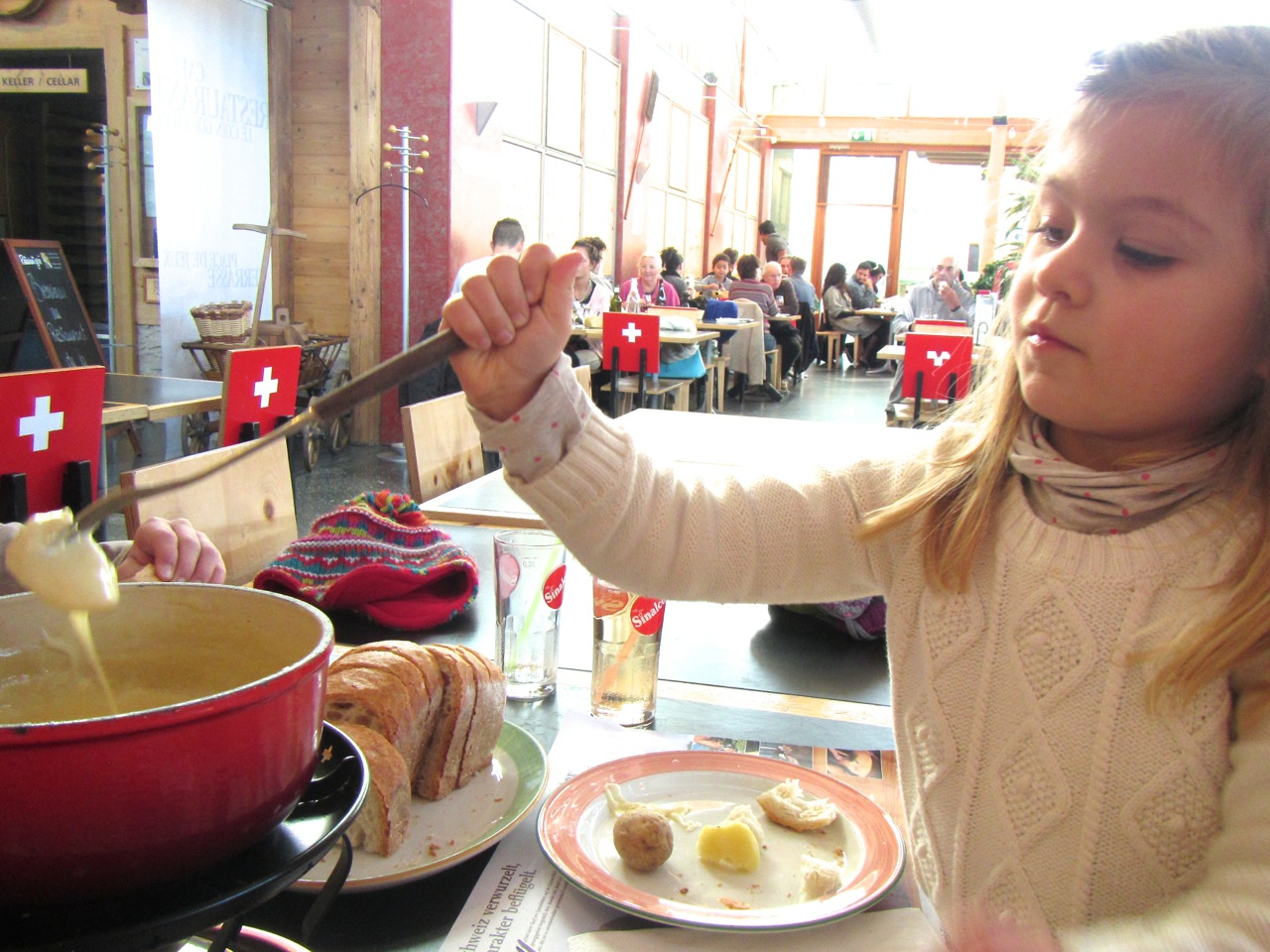
Within our first weeks in Switzerland, we gathered the kids and headed to the town of Gruyères (I have no idea why the town has an “s” at the end while the district of Gruyère and their cheese does not). We wanted to see how one of the best cheeses in the world is made, and of course to sample the first fondue of our three-month stay. What better place to do that than Gruyères?
We headed to La Maison du Gruyère, and after an amazing moitié-moitié fondue that even our three-year-old enjoyed, we headed next door to the museum and cheese factory, to see how the great cheese is made. They had a wonderful, interactive exhibit. A headset given out at the start provides a narrative in thirteen languages. Both kids loved the audio program, perhaps more so because “a cow” tells the stories. The exhibit included a sampling of all the smells of the flora a cow might eat, which in turn would make its way into the unique flavors of the cheese.
Among the facts we learned: Cows are milked twice a day, with the morning and evening milk getting combined. In one day, one cow eats 100 kilograms of fresh grass (or hay in winter), drinks 85 liters of water and produces up to 22 liters of milk—very impressive. It takes 12 liters of milk to produce just one kilo of cheese, so you can see why the cows are treated with such love and respect here. Also interesting, the Swiss keep two-thirds of the Gruyère for themselves, only exporting a third of it.
We also watched in fascination as the two workers in the small dairy cheese factory process a new batch of giant wheels of Gruyère. (Up to 48 of these wheels are produced each day.) Part of the process includes curdling the milk using rennet, a natural ingredient made of calf stomach, and pouring it into giant wheel molds, 7,000 of which are stored in the cellar downstairs, below the museum. They are quite a sight! Part of the process also includes soaking the cheese wheels in salt baths and aging them for at least three months. The sample they gave at the museum’s entrance included a slice aged at three months, six months and nine months, the last of which was the most salty and, in my opinion, the most flavorful.
The cheese factory is not the only thing to see in the small, quaint town of Gruyères. After the fondue and museum, we walked up the big hill into the town and toward its castle. Its cobblestone streets are lined mostly with picturesque restaurants and cafés. Gruyères has a few museums, among them the famous H.R. Giger Museum, named after the famous Swiss artist who created the creatures in the film, Alien. The museum café, just across the pathway, shows off elaborately created metal decor and offers blood coffee. Hmm… if only we had time to stop there.
We were too late to visit the Gruyères Castle on this day, but we did return another day, to see the castle and enter the Giger Museum. (There is a discount on entry tickets if you see both these attractions.) The kids loved exploring the many rooms and floors of the castle, some of which were decked out in 16th century furniture or equipment. The Giger museum was fascinating, but note that small children (under six) might find the art frightening.
Note: Much of this post is part of a longer article on fondue, written for our travel blog.

Leave a Reply